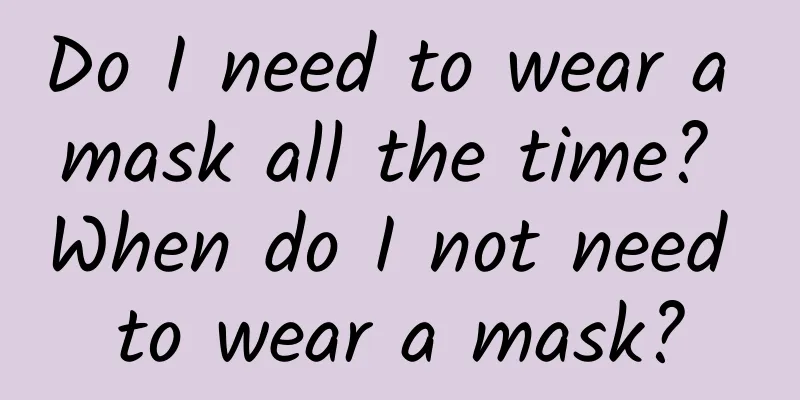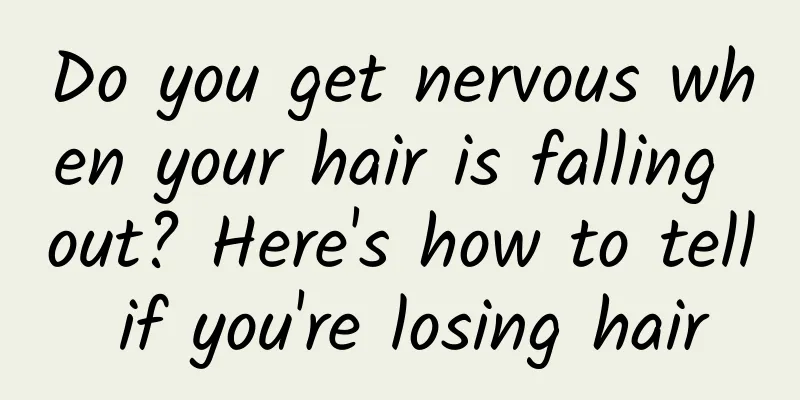Do I need to wear a mask all the time? When do I not need to wear a mask?

|
We all know that masks are a common type of protective equipment. They have a very good protective effect and can prevent infection with the new coronavirus. The use of masks also has certain requirements. So should masks be worn all the time? Let's take a closer look! Do I need to wear a mask all the time?You don’t need to wear a mask at home or in well-ventilated places with low crowd density. In non-epidemic areas, when you are alone in an open and ventilated place, you do not need to wear a mask. If there are visitors, you should keep a distance of more than one meter. Citizens do not need to wear a mask when driving alone. In a well-ventilated office, single people can also not wear a mask. Wu Zunyou, chief epidemiologist and researcher at the Chinese Center for Disease Control and Prevention, has called for ordinary people to replace ordinary surgical masks every 1 to 2 days. There is no need to disinfect or heat them, and under normal circumstances, there is no need to wear professional masks such as N95. When not to wear a maskWu Zunyou, chief epidemiologist and researcher at the Chinese Center for Disease Control and Prevention, believes that if a person is at home alone or if the family has never gone out, there is no need to wear a mask at home; in the community, if there is no epidemic of COVID-19 in the community, there is no need to wear a mask outdoors. Feng Luzhao, a researcher at the Infectious Disease Prevention and Control Division of the Chinese Center for Disease Control and Prevention, said that if you are alone, such as at home without contact with outsiders, including in a private car, or walking alone outdoors, in a community, or in a park with few pedestrians, there is no need to wear a mask. The "Technical Guidelines for the Selection and Use of Masks for Preventing Novel Coronavirus Infections among Different Populations" recently issued by the Joint Prevention and Control Mechanism of the State Council for the Response to the Novel Coronavirus Pneumonia Epidemic also mentioned that people who engage in indoor activities at home, scattered residents, outdoor activities including children and students in open places/venues, and workers in well-ventilated workplaces are all low-risk exposure personnel. These people do not need to wear masks at home, in well-ventilated places and in low-density places. Non-medical masks, such as cotton yarn, activated carbon and sponge masks, have a certain protective effect and can also reduce the spread of droplets produced by coughing, sneezing and talking, and can be used according to the situation. How to wear a mask betterWash your hands before wearing a mask. Avoid touching the inside of the mask with your hands while wearing it to reduce the possibility of contamination. Distinguish the inside and outside, top and bottom of the mask. The light-colored side is the inner layer, which should be close to the mouth and nose, and the dark side faces outward. The end of the metal strip "nose clip" is the top of the mask. Do not wear it upside down, and do not wear it on both sides alternately. Replace the mask in time if it leaks, and do not wear the mask for more than four hours. Do not touch the front of the mask (the contaminated side). First untie the lower straps, then the upper straps. Pinch the straps of the mask with your fingers and throw them into the corresponding trash can. Wash your hands after taking off the mask. What should I pay attention to when using masks?1. Disinfection and reuse of masks is a helpless measure due to material shortages. N95-level masks can be used multiple times, but in principle, disposable medical masks are not recommended for reuse. 2. After disinfection, if you find that the nose clip of the mask is not tight, or the airtightness of the mask is not as good as before, please stop using it immediately! 3. Disinfection method is only suitable for low-risk groups: those who are not in Hubei area, are not medical staff, do not go to hospitals, and do not come into contact with patients. 4. When entering and leaving crowded and enclosed places, it is recommended not to use disinfection methods, and the mask should be discarded directly after use. |
>>: What kind of masks are unqualified? How to tell whether disposable medical masks are qualified?
Recommend
Sleepiness during pregnancy means a boy
Many women will experience various body changes i...
What to do about menstrual pain
Menstrual pain is relatively familiar to many of ...
Treatment of Trichomonas vaginitis in pregnant women
Maybe we all don’t have a clear understanding of ...
World Health Organization: 10%~20% of infected people will develop COVID-19, and this is the reason!
As the first batch of patients infected with the ...
What is the cause of lower abdominal pain at 33 weeks of pregnancy?
What is the reason for lower abdominal pain at 33...
What to do if you have ovarian cysts after egg retrieval
Ovarian cysts after egg retrieval are a very comm...
What causes breast pain and enlargement?
In fact, quite a number of women have experienced...
Can I eat ice cream during my period?
You cannot eat ice cream during menstruation, mai...
Can a 25-year-old girl still grow taller?
During the growth process, girls will experience ...
The shape of a woman's genitals
In our lives, many men have some misunderstanding...
Is it normal to have diarrhea after a normal birth?
When it comes to childbirth, some women give birt...
The more you remove earwax, the more you produce? It could be a sign of 4 diseases, so be careful!
Recently, the topic of ear cleaning has frequentl...
How long does it take to produce milk after a normal birth?
Women who give birth for the first time are easil...
What are the effective ways to slim down your thighs?
Many of us work hard for our figure and beautiful...
Can I eat beans to stop milk production during breastfeeding?
After the birth of a newborn, most mothers choose...









